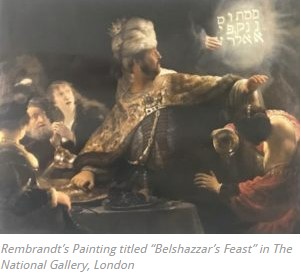COVID-19: Rembrandt’s Belshazzar’s Feast in a time of chiaroscuro 2020
Facebook Twitter LinkedIn EmailDr. Daniel Lucey, who has responded to, and monitored information on outbreaks since 2001, has provided a series of updates and analysis on what is now the COVID-19 pandemic in Science Speaks posts since Jan. 6, first published Jan. 7. This is his 21st update on questions raised by the continued spread of, and responses to the virus that causes COVID-19.
Rembrandt, like Leonardo da Vinci, Carvaggio, Rubens, and Velazquez, used a technique in his paintings called “chiaroscuro”. This term is derived from the Italian chiaro, ”light”, and scuro, “dark”. It “is a technique employed in the visual arts to represent light and shadow as they define three-dimensional objects”.
Living now in the time of the COVID-19 pandemic could be visualized as living in “A Time of Chiaroscuro”, of light and dark, of hope and agony, of viral waves during low tide and viral waves during high tide.
One example of Rembrandt’s use of chiaroscuro is his renowned painting “Belshezzar’s Feast” (completed 1635-1638) in the National Gallery in London.

In this 2020 time of the COVID-19 pandemic viral plague, one modern re-interpretation of Rembrandt’s “Belshezzar’s Feast” could be that humans of all nationalities are Belshazzar. This virus hunts humans not nationalities. In this re-interpretation, we are all Belshazzar.
As in the original biblical story of Belshezzar (Daniel 5: 5-25) today we, as Belshezzar, can see the writing on the pandemic wall. In this 2020 re-interpretation applied to the pandemic, the writing on the wall tells us how to prevent transmission of this virus and live safely in the time of the pandemic.
Unlike the original Belshezzar, we must read the writing on the wall, understand its words, and act accordingly for as long as necessary. Otherwise, we may suffer the same consequences as did the biblical Belshazzar.


